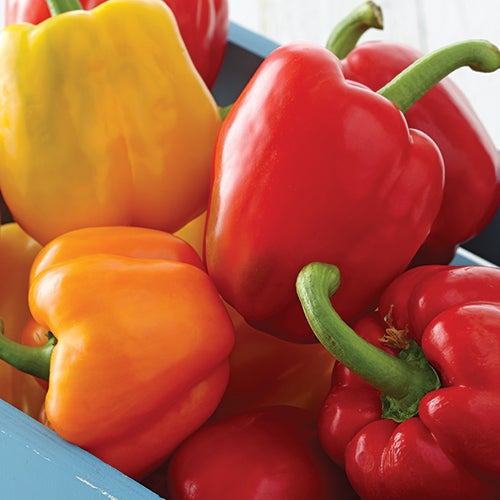Cooking with Bell Peppers

bell peppers
Need inspiration? Discover 6 great reasons to eat seasonal and local.
Native to Central and South America, bell peppers were brought to North America in the 18th and early 19th centuries, and are now a staple across a wide variety of cuisines. Though all colors may be used interchangeably, green and purple peppers are slightly more bitter and herbal than the other colors, and red are generally the sweetest.
Peak Season: June to August
How to select: Peppers should have taut, smooth skin and feel heavy for their size.
Price range: $1.50 to $4 per pound
Keep it fresh: Keep refrigerated in a plastic bag and eat within 5 days. If skin begins to slacken, use as soon as possible.
Pairs well with: Quinoa, couscous, corn, beans, eggplant, onions, cilantro, beef, chicken
Creative uses: Grill whole peppers until skin is black, then peel, slice and serve with steak fajitas. Or stuff peppers with quinoa, ground chicken, corn, herbs and cheese then bake.
Nutrition highlights: Not only are they high in carotenoid phytonutrients, which may prevent type 2 diabetes, but bell peppers also contain over 30 different types of carotenoids including beta-carotene and cryptoxanthin, both of which are precursors to immune-supportive vitamin A.
Bell Pepper Recipes
- Sweet Pepper Sirloin Salad with Fresh Horseradish Vinaigrette & Blue Cheese
- Roasted Sweet Peppers with Sour Orange Vinaigrette & Goat Cheese
- Sweet & Sour Pineapple Pork Stir-Fry
- Red curry stuffed peppers with tofu & vegetables
- Baked Honey-Mustard Chicken Thighs with Roasted Peppers